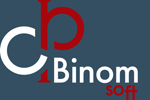All types of data in the CRAFT system are divided into several main categories: directories, documents, registers.
Directories — the most common type of data in informational systems. Directories are used to store frequently used information, for example about the nomenclature of goods or the list of organizations-contractors. In the CRAFT system the directories may have a simple linear structure or hierarchy with an arbitrary (unlimited) level of nesting. All directories’ standard interface provides improved tools for searching, sorting and filtering of the data.
Documents — it is the most volumetric part of the information that is taken into account in the system. Special principles of keeping this information for the convenience and speed of access are determined for the documents:
1. All the documents in the module are separated by type (for instance, Proforma Invoice or Commercial Invoice). The numbering of different types of documents is independent from each other. However, within a single type of documents their number must be unique.
2. The numbering within one type of document is divided by the so-called «Departments». Departments — these are directories of structural departments of an enterprise, geographically separated branches, etc., which assumes separate document circulation. Separation of documents between departments is also a necessary foundation for a successful exchange of information between different departments or branches of an enterprise.
3. The numbering of each type of document is divided by reference periods. Reference period — is a year. As the new year comes, numbering of the documents when entering starts again from «one».
4. Documents are stored in special sections of accounting, in which the numbering of documents is independent. Typically, an accounting section is a separate legal entity, the tracking in the informational system is maintained about.
Registers — are the journals, which are used for storing the consolidated financial (and other) indicators, for example — balance of account. Usually the registers are associated with the documents by certain business logic. For instance, the data in the register of remaining goods depend on the state of the document «Commercial Invoice» (held / delayed). The amount of registers in the CRAFT system is optimal for calculating and storing all the necessary indicators for the organization of competent managerial accounting at the firm.
It is noteworthy that the data in the registers, as well as the documents, are divided by an accounting period and accounting sections so that such goods remains for one legal entity are not mixed with the goods remains for another in a particular accounting period.
On the contrary, any directories never depend on either accounting periods, nor on sections of accounting, so all the information in directories (assuming that we are working in one database) is always available in any accounting section (for any legal entity). However, some directories may in addition have data separation by the structural units (branches). This is especially important if we are talking about a large holding company with an extensive network of geographically distributed branch offices. In this case, some directories may be mantained separately in some branches (for instance, the customer base). However, in case of the competent data organization, mutual exchange of the data between branches and headquarters of a company will be possible, so that the central office will have a full picture of clients’ base of all the branches of the holding.
Products
is an ERP system providing automation in most important business aspects of an enterprise.
The universal customizable utility for data transfer/conversion from one database to another.




